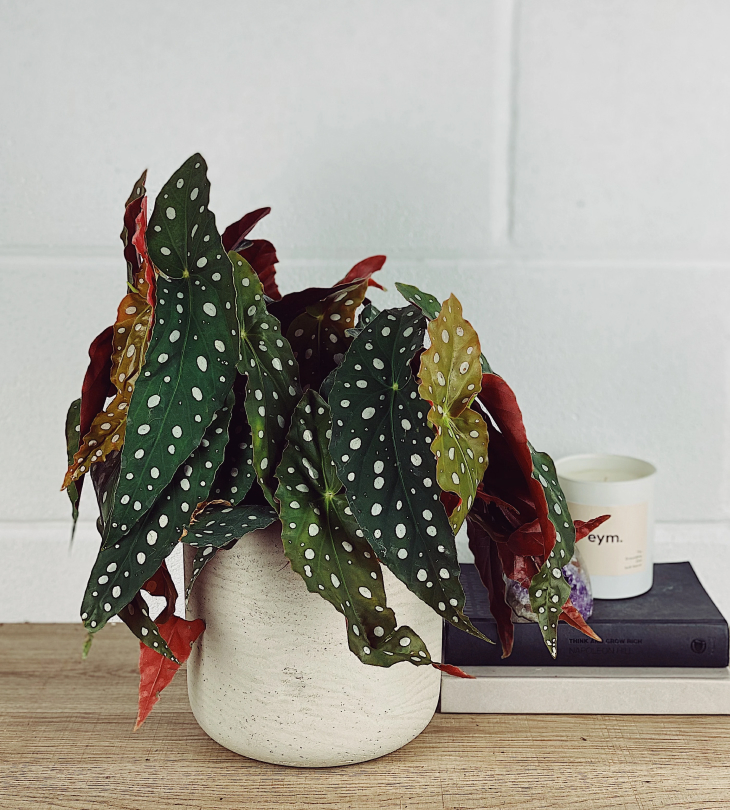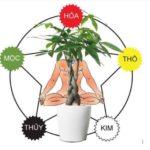Rainbow seven-color tree
Besides standing out with vibrant, eye-catching colors and full of vitality, the rainbow seven-color tree is also very easy to buy and care for. Perhaps because of that, this type of ornamental tree is always the top choice when buying beautiful leaves to display indoors.
In feng shui, the rainbow seven-color tree symbolizes good luck, the beauty of life, and helps the homeowners ward off bad luck, bringing luck into the house. Especially, this type of tree can also absorb many toxins in the air, creating a fresh and comfortable living space.

Spotted Ocean Boulevard Tree
This is also known as the spotted ocean boulevard tree and stands out with its curved green leaves like bat wings, with silver white spots on the leaf surface, and deep red color underneath. The spotted ocean boulevard tree will bloom beautiful pale pink flowers in the spring, which is why it is loved and planted as a decoration in many houses.
As the tree originates from the South, Central America as well as tropical and subtropical forests in Asia, the spotted ocean boulevard tree prefers scattered light. To allow the tree to grow well, you should not expose them to direct sunlight. The ideal light conditions for the tree are indirect sunlight of about 70%. The tree likes to live in moist soil without waterlogging, so you can water it 3 times a week in the spring and summer. In winter, watering the spotted ocean boulevard tree once a week is sufficient.

Rain Tree
The rain tree (also known as rubber tree, longan tree, or Indian rain tree) originates from the northeastern region of India and Indonesia. Nowadays, this ornamental tree is loved by many Vietnamese people and brought home to be planted as decoration. With its vibrant appearance, the rain tree serves as a focal point for living spaces and adds a refreshing green color to your home.
Due to its moderate size, you can place the rain tree on a table. They also thrive in air-conditioned environments or low-light conditions. Thanks to that, rain trees can be placed in cute pottery pots and placed on work desks, study desks, or in coffee shops.
Rain trees often grow in small clusters and bloom from May to June every year. The flowers of the tree gradually change from orange to black, and the small fruits are about 1cm long and greenish yellow.

Aglaonema
Aglaonema is a perennial tropical plant that does not have a trunk on the ground and its leaves grow on long stems of 15 to 30 cm, directly from the underground stem. The leaves of the aglaonema tree often have eye-catching shapes such as hearts, arrowheads, or spears. The leaves of the aglaonema tree are about 15 to 35 cm long, with white, red, gray, or pink spots or stripes. The leaf blades of the aglaonema tree are quite thin, and many people liken them to “wrinkled wings”, with visible veins on the upper surface.
Aglaonema trees can withstand shade, but during the growth process, they need sufficient light and water supply. You should water this ornamental tree 2 to 3 times a week. This ornamental tree grows best in temperatures above 15 degrees Celsius, choose a well-draining soil, rich in humus, and with a low pH.


































